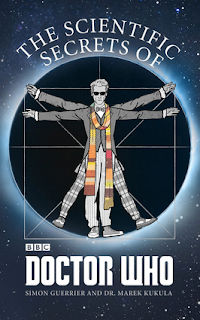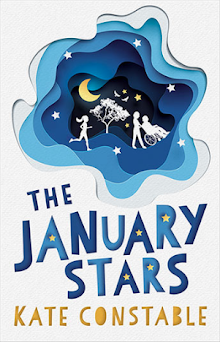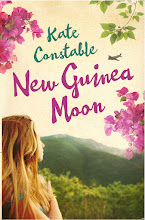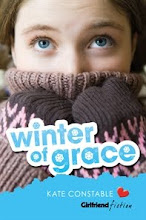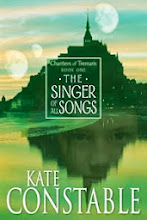In my twenties, I shared a small, dark house with a friend who was in therapy (he went on to qualify as a psychotherapist himself). Some of our happiest moments in that house were spent with our feet up on the gas wall heater, me on the cane couch, him in the armchair, endlessly analysing ourselves, each other and all our friends and family.
Inspired by Robert's example, I even tried therapy myself, but I didn't last long. Reading Irvin Yalom's accounts of his own patients, I found myself drawn back to my own experience, wondering what my therapist made of it and exactly why I'd abandoned the project so abruptly. I don't think I was really committed to therapy, to tell the truth; I felt I could manage on my own (maybe that's the story...)
I'm pretty sure I've read Love's Executioner before -- maybe even when I was living in Budd St. Dr Yalom is an appealing writer -- honest about his own mistakes and failings, determined to dig beneath the surface to find what's interesting about his clients, even when they seem dull or irritating (I remember I was very concerned that my therapist might find me boring... I'm sure I was!) Again and again, he returns to his central mission -- to explore the meaning of being human. Interestingly, in this earlier work, Yalom is much more preoccupied with sex; in Creatures of a Day, published many years later, his thoughts revolved more around death.
There is wisdom in this book, hard won and sometimes denied (Yalom includes some failures in these case studies). No wonder it's become a classic.
28.2.17
26.2.17
Modern Love
While my aunts were visiting from the UK, Michael and I took them out to visit Heide. I've been there several times before, but strangely never gone inside the original house -- Heide 1 -- or even known that it existed. It just so happened that there was a craft market on the grounds that day, too, so we had plenty to occupy us, as well as the exhibition that I really wanted to see: three female modernist painters, Margaret Preston, Grace Cossington-Smith and Georgia O'Keefe. Wandering the gardens and exploring the house and galleries, we spent an absorbing afternoon. But though I had some vague notions about Heide's famous inhabitants, John and Sunday Reed and their artistic circle, I realised that I knew very few actual facts to satisfy my aunties' curiosity.
Too late for my aunties, but Mum's new friend (via Westgarth) heard that we'd visited Heide and kindly lent me her copy of Modern Love: The Lives of John and Sunday Reed, which I've spent the best part of a week reading (thanks, Myroula!)
Wow, it really is a tangled story, mingling love and bitterness, generosity and venom, friendship and art and tragedy. John and Sunday Reed are usually described as patrons or benefactors of the artists they supported, but they preferred to see themselves as partners and collaborators in the artistic project, especially as their financial support always extended into friendship and often into passion. While these intimate relationships were nourishing for a time, they usually turned sour at some point, and ended up damaging everyone involved.
I was more interested in the first part of the book, which traces most of these early, intense entanglements; the latter part, which described the Melbourne post-war art scene in more detail than I really needed, was less engaging. But I really did learn a lot about Australia's place in the modern art movement, and the lives of many extraordinary people. It's so sad that things worked out tragically for some of the players in the drama (thinking particularly of Sweeney, the Reeds' adopted son, who took his own life in his thirties).
I'm very glad I took the time to read this, and next time I visit Heide, I will see the place with a new, and better informed, eye.
Too late for my aunties, but Mum's new friend (via Westgarth) heard that we'd visited Heide and kindly lent me her copy of Modern Love: The Lives of John and Sunday Reed, which I've spent the best part of a week reading (thanks, Myroula!)
Wow, it really is a tangled story, mingling love and bitterness, generosity and venom, friendship and art and tragedy. John and Sunday Reed are usually described as patrons or benefactors of the artists they supported, but they preferred to see themselves as partners and collaborators in the artistic project, especially as their financial support always extended into friendship and often into passion. While these intimate relationships were nourishing for a time, they usually turned sour at some point, and ended up damaging everyone involved.
I was more interested in the first part of the book, which traces most of these early, intense entanglements; the latter part, which described the Melbourne post-war art scene in more detail than I really needed, was less engaging. But I really did learn a lot about Australia's place in the modern art movement, and the lives of many extraordinary people. It's so sad that things worked out tragically for some of the players in the drama (thinking particularly of Sweeney, the Reeds' adopted son, who took his own life in his thirties).
I'm very glad I took the time to read this, and next time I visit Heide, I will see the place with a new, and better informed, eye.
20.2.17
The Real History Behind Foyle's War
I stumbled across The Real History of Foyle's War by Rod Green while browsing on Brotherhood Books. (I really should shut up about Brotherhood Books and keep it as my own secret, or else all the good stuff will be snapped up before I have a chance to find it!)
Foyle's War is one of our all-time favourite TV series (Michael says it probably is his absolute number one). A beautifully produced murder mystery series set in Hastings during World War II, it has explored all sorts of knotty issues -- espionage, internment, horrific injuries, women's employment, evacuees, the arrival of American troops and subsequent racial tensions -- as well as your everyday black market crimes, conscription dodgers, home grown fascist sympathisers, bombings etcetera. The show features some gorgeously understated acting from Michael Kitchen as Christopher Foyle (he can say more with a single raised eyebrow than with pages of dialogue), his reserved sidekick Milner (whose amputated leg seemed to grow back as the series wore on), wonderfully plummy Sam Stewart (surprisingly, the only character based on a real person!), and Foyle's dashing pilot son Andrew.
I enjoyed this book hugely, even though it finished at the end of season 6 and didn't include the very last of Foyle's post-war adventures, or the end of the war itself. It was a thorough coverage of the general background of crime and police work during the war, as well as detailed episode-by-episode plot descriptions and the origins of those stories in the real world. Lavishly illustrated, this was a hugely enjoyable read.
Foyle's War is one of our all-time favourite TV series (Michael says it probably is his absolute number one). A beautifully produced murder mystery series set in Hastings during World War II, it has explored all sorts of knotty issues -- espionage, internment, horrific injuries, women's employment, evacuees, the arrival of American troops and subsequent racial tensions -- as well as your everyday black market crimes, conscription dodgers, home grown fascist sympathisers, bombings etcetera. The show features some gorgeously understated acting from Michael Kitchen as Christopher Foyle (he can say more with a single raised eyebrow than with pages of dialogue), his reserved sidekick Milner (whose amputated leg seemed to grow back as the series wore on), wonderfully plummy Sam Stewart (surprisingly, the only character based on a real person!), and Foyle's dashing pilot son Andrew.
I enjoyed this book hugely, even though it finished at the end of season 6 and didn't include the very last of Foyle's post-war adventures, or the end of the war itself. It was a thorough coverage of the general background of crime and police work during the war, as well as detailed episode-by-episode plot descriptions and the origins of those stories in the real world. Lavishly illustrated, this was a hugely enjoyable read.
17.2.17
Soon
Morris Gleitzman's Soon is the fifth book in what he describes as the 'Felix family' of books: Once, Then, After, Now and now this volume, which is set in the period immediately after the end of the war. But the world is still far from safe for Felix and his friends. Food is scarce, brutal soldiers and partisans are still roaming the streets, and death is around every corner.
Although Soon is firmly written for younger readers, some very dark themes are touched on here -- rape, hate crime, Nazi medical experimentation, murder and genocide. The body count is high, and so is the rate of injury. But Gleitzman keeps the action moving at such a pace, and with enough humour and optimism, that the reader isn't weighed down by the dark content.
Soon won the CBCA Book of the Year for Younger Readers last year, and I suspect that it was a kind of lifetime achievement award for the entire series. I asked Evie if she'd read any of them; she said no, but several of her friends read the first book, Once, last year, in Grade 6. Reviews were mixed -- some loved it, some found it 'boring.' I'm not sure about that verdict -- perhaps what they really meant was confronting, too confronting to fully engage with. And that's fine. But for young readers who are ready to face some of our world's darkest history, this series is a fine introduction.
Although Soon is firmly written for younger readers, some very dark themes are touched on here -- rape, hate crime, Nazi medical experimentation, murder and genocide. The body count is high, and so is the rate of injury. But Gleitzman keeps the action moving at such a pace, and with enough humour and optimism, that the reader isn't weighed down by the dark content.
Soon won the CBCA Book of the Year for Younger Readers last year, and I suspect that it was a kind of lifetime achievement award for the entire series. I asked Evie if she'd read any of them; she said no, but several of her friends read the first book, Once, last year, in Grade 6. Reviews were mixed -- some loved it, some found it 'boring.' I'm not sure about that verdict -- perhaps what they really meant was confronting, too confronting to fully engage with. And that's fine. But for young readers who are ready to face some of our world's darkest history, this series is a fine introduction.
16.2.17
One Good Turn
Kate Atkinson's second Jackson Brodie novel, One Good Turn, is sub-titled 'A Jolly Murder Mystery', which is not a totally accurate description of its contents. It is, however, a lot jollier than the other two titles, since (spoilers!) only unpleasant characters (with one exception) meet a gory end and everyone else survives relatively unscathed, except for Jackson, who is unmercifully beaten up as usual. Given that Atkinson has said that she wanted to create 'a good man' for her main protagonist, you have to wonder if there is a touch of sadism in her treatment of the poor bloke, who seems to be biffed with baseball bats, run over, almost drowned and punched up every few pages.
I'm starting to see why some readers complain about Atkinson's tricksy love of coincidence, though it isn't spoiling my enjoyment (yet). In the opening chapters we are presented with a mysterious man with a false name who is obviously up to no good; a beserk, murderous thug; a gentle writer of the aforementioned 'jolly' mystery novels, who lives in an imagined 'retro-utopia' of nostalgic England (I live there too); a Russian call-girl; and middle-aged, matter-of-fact Gloria who suspects that her husband is a crook.
Of course, events will slowly draw this disparate cast together, with the aid of Jackson, his actress girlfriend Julia (from Case Histories) and Detective Inspector Louise Monroe (who will return in When Will There Be Good News?), the threads pulling tighter and tighter until you're scared the plot will snap under the strain. But it doesn't -- not quite.
One more in this series to go. I'll definitely read it, but I might leave a longer gap this time.
I'm starting to see why some readers complain about Atkinson's tricksy love of coincidence, though it isn't spoiling my enjoyment (yet). In the opening chapters we are presented with a mysterious man with a false name who is obviously up to no good; a beserk, murderous thug; a gentle writer of the aforementioned 'jolly' mystery novels, who lives in an imagined 'retro-utopia' of nostalgic England (I live there too); a Russian call-girl; and middle-aged, matter-of-fact Gloria who suspects that her husband is a crook.
Of course, events will slowly draw this disparate cast together, with the aid of Jackson, his actress girlfriend Julia (from Case Histories) and Detective Inspector Louise Monroe (who will return in When Will There Be Good News?), the threads pulling tighter and tighter until you're scared the plot will snap under the strain. But it doesn't -- not quite.
One more in this series to go. I'll definitely read it, but I might leave a longer gap this time.
14.2.17
Cloudwish
Most of the images of the cover of Fiona Wood's award-winning Cloudwish belong to the decapitated-female school of YA artwork. But my cover, with all the medals on it, has lost the female, who has been replaced by a string of pegs. It's cute, but not really that attention-grabbing. I don't know why the publishers made the change, it would be interesting to find out.
(**EDIT I've just discovered that I have the US cover! The plot thickens...)
I just love Fiona Wood's novels. She writes slowly, but it's a vindication of quality over quantity. Cloudwish is the third in a loosely connected series that began with Six Impossible Things and continued with Wildlife. This is really excellent YA literature: funny and smart, heartfelt but not over the top, intelligent and satisfying. Van Uoc Phan is a worthy successor to her heroine, Jane Eyre, while Billy Gardiner nicely fills the niche between bad boy and vulnerable adolescent male. Lou, Sibylla and Michael from the previous novels also make their appearance.
Cloudwish makes an interesting companion read to Alice Pung's Laurinda. They both feature bright girls from Vietnamese backgrounds, scholarship girls at Melbourne private schools who are fish out of water and trying to reconcile two cultures. But they are quite different stories and take differing paths to their resolution. Laurinda is perhaps more earnest, while Cloudwish has a lighter touch.
Fantastic Australian fiction.
(**EDIT I've just discovered that I have the US cover! The plot thickens...)
I just love Fiona Wood's novels. She writes slowly, but it's a vindication of quality over quantity. Cloudwish is the third in a loosely connected series that began with Six Impossible Things and continued with Wildlife. This is really excellent YA literature: funny and smart, heartfelt but not over the top, intelligent and satisfying. Van Uoc Phan is a worthy successor to her heroine, Jane Eyre, while Billy Gardiner nicely fills the niche between bad boy and vulnerable adolescent male. Lou, Sibylla and Michael from the previous novels also make their appearance.
Cloudwish makes an interesting companion read to Alice Pung's Laurinda. They both feature bright girls from Vietnamese backgrounds, scholarship girls at Melbourne private schools who are fish out of water and trying to reconcile two cultures. But they are quite different stories and take differing paths to their resolution. Laurinda is perhaps more earnest, while Cloudwish has a lighter touch.
Fantastic Australian fiction.
12.2.17
The Scientific Secrets of Doctor Who
One of my daughters, who shares my love for the show, gave me The Scientific Secrets of Doctor Who for my birthday last year. There are a few of these kinds of books around, latching onto the popularity of various sci-fi franchises to encourage young readers to explore the real science that lies behind the stories. (Did I once own a shelf of books with titles like The Philosophy of Star Trek and The Metaphysics of The X-Files? Er, maybe...)
This was a fresh twist on the genre, though, with a short story featuring one of the Doctors preceding each chapter. And as well as the predictable speculations about the possibility of time travel and life on other planets, there were thoughtful discussions of ageing and death, regeneration, war and artificial intelligence, as well as many other subjects. The short stories were pretty good, too, so that was a bonus.
This was an intelligent introduction to a wide range of scientific topics, gently connected to the stories and mythos of Doctor Who -- though you'd need to be a Who tragic like myself to understand all the references. Younger converts might struggle -- or it might encourage them to check out Old Who, which is not a bad thing! I really enjoyed this book, and it was one of the better examples of the genre I've come across. Perfect for the young geek in your life. Or a slightly older one!
This was a fresh twist on the genre, though, with a short story featuring one of the Doctors preceding each chapter. And as well as the predictable speculations about the possibility of time travel and life on other planets, there were thoughtful discussions of ageing and death, regeneration, war and artificial intelligence, as well as many other subjects. The short stories were pretty good, too, so that was a bonus.
This was an intelligent introduction to a wide range of scientific topics, gently connected to the stories and mythos of Doctor Who -- though you'd need to be a Who tragic like myself to understand all the references. Younger converts might struggle -- or it might encourage them to check out Old Who, which is not a bad thing! I really enjoyed this book, and it was one of the better examples of the genre I've come across. Perfect for the young geek in your life. Or a slightly older one!
10.2.17
What the Raven Saw
Samantha-Ellen Bound's debut novel, What the Raven Saw, has several things going for it: an Australian author, a raven as hero (anti-hero?) which is pretty rare, a fairytale atmosphere. Most of my fellow book groupers loved it.
Perhaps I wasn't in the right mood. It was a hot week, I was under pressure because I only got hold of the book a day before our meeting, I had family in town and lots of errands to run. I must confess, my mind wasn't really on the raven and his problems. I found it hard to engage with this book, partly because I couldn't settle into a sense of place -- it felt as if the raven's church, and its community (which we never really got to see), had been transplanted from England into a grove of gum trees, neither one country nor the other. And I was bothered by the woolly spiritual stance -- the raven doesn't believe in God, but the priest does; there are ghosts, but no heaven -- it was all a bit vague and unsatisfying, and for a book so centred on questions of life and death, grief and loss and love, a bit more thinking through of these points might have been useful.
This is Bound's first novel, and I'll be interested to see where she goes next.
Perhaps I wasn't in the right mood. It was a hot week, I was under pressure because I only got hold of the book a day before our meeting, I had family in town and lots of errands to run. I must confess, my mind wasn't really on the raven and his problems. I found it hard to engage with this book, partly because I couldn't settle into a sense of place -- it felt as if the raven's church, and its community (which we never really got to see), had been transplanted from England into a grove of gum trees, neither one country nor the other. And I was bothered by the woolly spiritual stance -- the raven doesn't believe in God, but the priest does; there are ghosts, but no heaven -- it was all a bit vague and unsatisfying, and for a book so centred on questions of life and death, grief and loss and love, a bit more thinking through of these points might have been useful.
This is Bound's first novel, and I'll be interested to see where she goes next.
9.2.17
When Will There Be Good News?
I'm falling behind with my book responses!
When Will There Be Good News? is the third Jackson Brodie novel by Kate Atkinson and the one that happened to be on the shelf in the local library. (One Good Turn is at another branch but I've reserved it; the fourth book, Started Early, Took My Dog is on loan, and I've reserved that too!)
When Will There Be Good News? didn't have quite the same strong mystery hook as Case Histories but it made up for that with the inclusion of the wonderful Reggie Chase. Aged sixteen, looks twelve, alone in the world apart from her no-good brother, working as a nanny for Dr Joanna Hunter, whom she worships. When Dr Hunter goes missing, Reggie refuses to be fobbed off and proves to be a more able detective than some of the professionals. Tenacious as a Highland terrier, smart as a whip, Reggie is a delight.
Another satisfying read, though there were soooo many coincidences that credulity was strained. There was a train crash, convenient amnesia, explosions and car chases, grief and loneliness in various forms, and drugs hidden inside Latin books -- slightly more plausible than Antonia Forest's drug-running pigeons! But Atkinson's writing is what Helen Garner calls 'muscular and sinewy', strong enough to pull off just about anything.
When Will There Be Good News? is the third Jackson Brodie novel by Kate Atkinson and the one that happened to be on the shelf in the local library. (One Good Turn is at another branch but I've reserved it; the fourth book, Started Early, Took My Dog is on loan, and I've reserved that too!)
When Will There Be Good News? didn't have quite the same strong mystery hook as Case Histories but it made up for that with the inclusion of the wonderful Reggie Chase. Aged sixteen, looks twelve, alone in the world apart from her no-good brother, working as a nanny for Dr Joanna Hunter, whom she worships. When Dr Hunter goes missing, Reggie refuses to be fobbed off and proves to be a more able detective than some of the professionals. Tenacious as a Highland terrier, smart as a whip, Reggie is a delight.
Another satisfying read, though there were soooo many coincidences that credulity was strained. There was a train crash, convenient amnesia, explosions and car chases, grief and loneliness in various forms, and drugs hidden inside Latin books -- slightly more plausible than Antonia Forest's drug-running pigeons! But Atkinson's writing is what Helen Garner calls 'muscular and sinewy', strong enough to pull off just about anything.
8.2.17
Because Some People Cared Enough to Ask...
 |
| Map from Noel in Argentina; original artwork by Beth Norling |
Some time ago -- a long time ago now -- I let on that I was working on a new Tremaris book. It was true, and I was really excited about it, looking forward to returning to the world that had given me so much pleasure. This story was going to focus on Calwyn's daughter, and it would tie up some of the loose ends left dangling at the end of The Taste of Lightning, bringing back some of the characters from that book, as well as revisiting the cast of the original Tremaris trilogy and filling in their stories in the intervening years.
Hm. I think I can see where the problems started. That is an ambitious plan for one little book!
But that wasn't the only problem. It was hard to work out how much time to spend with the Taste of Lightning characters, and how many of them to bring back, and which ones. I knew some people really wanted to know what had happened to Calwyn and Darrow, but I wanted the focus to be on the younger characters, not the adults, as they would now be. My stage was becoming very crowded, jostling with characters who all demanded a voice and attention. I had a loose plot which I kept adjusting as I changed my mind about the balance of the story, adding and subtracting characters. I knew I wanted to set the bulk of my story in a part of Tremaris that I hadn't visited yet, the marshlands of the north. Then Julie Hunt's Song for a Scarlet Runner was published, and I despaired of writing a marsh story as good as hers!
I wrote, and started again, and replanned, and rewrote, and changed my mind, and started again. I had a beginning that I liked, but the story kept bogging down (ha!) at one particular point in the narrative, and I couldn't seem to heft the story over that roadblock and get it moving again. I quite liked some of the marsh scenes, but others fell flat. The mix of characters I'd ended up with didn't feel quite right. But the more I chopped and changed, the more my grasp of the story, my original conception, seemed to be slipping through my fingers.
But most importantly, while I was working on this book, my family suffered a major upheaval. My father had a debilitating stroke, my elderly mother came to live with us, and my family responsibilities had doubled overnight. It was a stressful and upsetting time, and I had limited energy and attention to spare for writing novels. It's hard to finish a book when you spend a long time away from it; it slips away from you. You forget what you were trying to do in the first place, and the work becomes a chore and a burden rather than a source of delight.
Finally, about three years after I'd first decided to write a Tremaris book ( a nice, easy, enjoyable book, I'd told myself!) I slogged my way to a finish line. Deep down I knew the manuscript was broken, perhaps beyond repair, and it was no surprise that my publisher agreed. At the back of my mind I'd wondered whether, if my publishers said no, I might self-publish it; but now I know that I don't want to do that either. I'm not happy with it. It doesn't work. And if you are a fan of Tremaris, you deserve better than that.
I'm not saying that there will never be another Tremaris story. But not this one. Not for now, anyway.
All I can say is, I'm so sorry.
1.2.17
The Owl Service
One of the unintended side effects of my year-of-not-buying-books might be that I will re-read some of my old treasured favourites, including this one: Alan Garner's classic, The Owl Service. I remember when I first saw this book on the shelf as a child, I had a muddled idea that 'service' meant something like 'postal service' -- I imagined owls flitting back and forth with messages... Ooh! I wonder if that's how JK Rowling came up with her owl post!
But in this book, it means 'dinner service' ie plates.
I picked this copy up for $4 somewhere, just to own it, but I haven't re-read it for years. It's fantastic, a creepy, intense tale of Welsh myth and adolescent yearning. The three-way pattern of doomed love keeps repeating through the generations, which is an idea I might have unconsciously picked up for Crow Country, come to think of it.
The magic is released when Alison traces the pattern on a set of plates and makes paper owls out of it, which was something I always had trouble visualising, but thanks to the magic of the internet, I looked up Alan Garner's website and found a picture of the original owl plate, a gift to Garner from a friend.
So that's how it works! Simple, really.
But in this book, it means 'dinner service' ie plates.
I picked this copy up for $4 somewhere, just to own it, but I haven't re-read it for years. It's fantastic, a creepy, intense tale of Welsh myth and adolescent yearning. The three-way pattern of doomed love keeps repeating through the generations, which is an idea I might have unconsciously picked up for Crow Country, come to think of it.
The magic is released when Alison traces the pattern on a set of plates and makes paper owls out of it, which was something I always had trouble visualising, but thanks to the magic of the internet, I looked up Alan Garner's website and found a picture of the original owl plate, a gift to Garner from a friend.
So that's how it works! Simple, really.
Subscribe to:
Posts (Atom)







